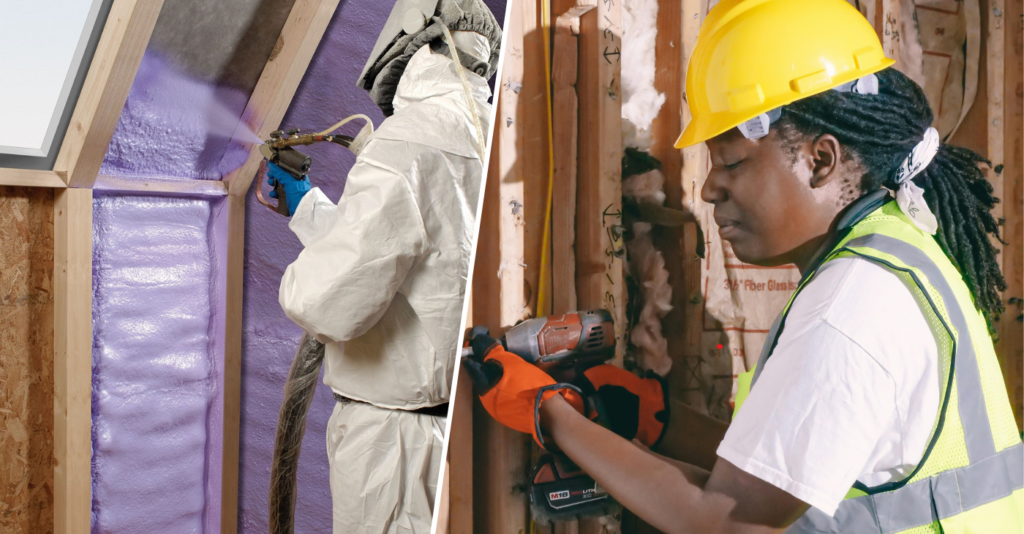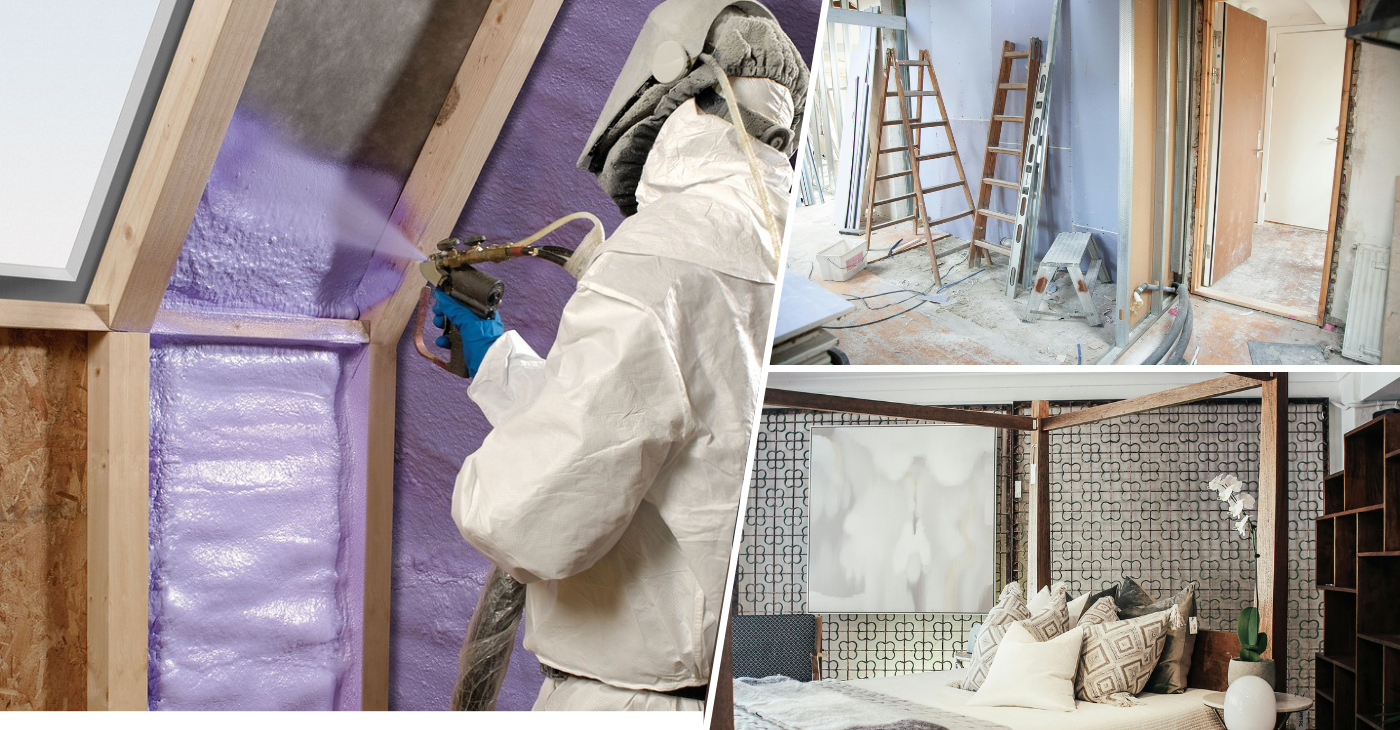Guide: Internal wall insulation – Why you should upgrade
Internal wall insulation (IWI) is an effective way to boost energy efficiency in your home. It improves comfort by maintaining a steady indoor temperature. It also helps with soundproofing, reducing noise between rooms or from outside. Whether you live in an older house or simply want better thermal performance, IWI offers many advantages. By upgrading, you can lower your energy bills, enjoy a quieter home, and make your space more comfortable year-round. This guide explains why internal wall insulation is a smart choice for homeowners.
What is internal wall insulation?
Internal wall insulation involves adding a layer of insulation material to the inside surface of exterior walls. The goal is to reduce heat loss, improve thermal comfort, and create a more energy-efficient living environment. This type of insulation can be applied using different materials such as rigid foam boards, mineral wool, or insulated plasterboards, each providing various degrees of thermal and soundproofing performance. It keeps warm air inside during the winter and blocks heat from entering in the summer. It makes your home more comfortable all year round.
Types of internal wall insulation
There are several types of internal wall insulation to choose from:
- Rigid insulation boards: These are foam boards made from materials like polystyrene or polyurethane. They are installed directly onto the internal surface of the wall. It is often covered with plasterboard for a smooth finish. This type provides excellent thermal performance.
- Insulated plasterboards: These are a combination of insulation and plasterboard. It can be easily installed onto walls. They reduce heat loss and improve wall durability while offering an easy installation process.
- Mineral wool: Mineral wool is often used in stud walls or between battens. It provides both thermal and soundproofing benefits. This makes it a great option for improving comfort in multi-story buildings or noisy areas.
- Natural materials: Eco-friendly options like sheep’s wool, cork, or wood fibre are gaining popularity. These materials are not only sustainable but also effective at regulating moisture and providing decent insulation.
Why should you upgrade?
Upgrading to internal wall insulation offers numerous advantages that go beyond just improving thermal efficiency:
- Energy savings: One of the main reasons to upgrade is the potential for energy savings. IWI helps reduce heat loss through your walls. This means your home requires less energy to stay warm. In older homes heat can escape easily through solid walls, this can lead to significant reductions in your heating bills.
- Enhanced comfort: Insulated walls provide better temperature control throughout your home, preventing drafts and cold spots. As a result, the temperature remains stable, making your living environment more comfortable.
- Environmentally friendly: It helps reduce your carbon footprint by reducing the amount of energy needed to heat or cool your home. If you choose eco-friendly materials such as cork or wool, you can further reduce your environmental impact.
- Preserving exterior aesthetics: Unlike external wall insulation, internal wall insulation leaves your exterior untouched. This is particularly beneficial if you live in a heritage or listed building.

What to consider before upgrading?
While upgrading to internal wall insulation is a smart move, there are a few important factors to consider:
- Wall condition: If your walls have any issues with dampness or damage, these need to be addressed before insulation is installed. Damp walls can lead to mould growth, which may reduce the effectiveness of the insulation and cause long-term damage to your home.
- Space: It may slightly reduce the size of your rooms, depending on the thickness of the insulation. For homes with limited space, thinner insulation materials may be preferable, but they may not offer the same level of thermal insulation as thicker options.
- Cost: While the initial investment for the insulation can be high, the long-term energy savings often offset this cost. Additionally, some homes may be eligible for government grants or subsidies to help cover the costs of upgrading insulation.
- Installation process: Installing insulation can be disruptive, as it may require moving electrical outlets, radiators, or cabinets. It’s essential to plan the installation process carefully to minimise inconvenience.
How does it save energy and reduce costs?
Internal wall insulation acts as a barrier that slows down the transfer of heat between the interior of your home and the outside environment. In the winter, it helps keep the warm air generated by your heating system inside your home. In the summer, it prevents heat from penetrating through the walls, keeping your home cooler. As a result, your heating and cooling systems don’t have to work as hard, leading to lower energy consumption and reduced utility bills.
Can it improve soundproofing?
Yes, internal wall insulation can significantly improve soundproofing. Materials like mineral wool are effective at absorbing sound waves, which helps reduce noise transmission between rooms or from outside. This makes it ideal for homes in noisy areas or for creating quieter indoor spaces, such as home offices or bedrooms. It also reduces the noise of heating systems or appliances, contributing to a more peaceful home environment.
Is it good for older homes?
Internal wall insulation detail is particularly beneficial for older homes with solid walls. These types of homes typically lose more heat through the walls compared to newer properties with cavity walls. It is a great way to improve energy efficiency in these homes without changing the external appearance. However, it’s crucial to ensure that moisture and dampness issues are addressed before installation to prevent potential problems down the line.
Key Benefits of upgrading
- Lower energy bills: By reducing heat loss, IWI helps lower your heating bills, saving you money over time.
- Soundproofing: It dampens noise, making your home quieter and more comfortable.
- Moisture control: Insulation materials like mineral wool can help regulate moisture, reducing the risk of condensation and mould growth.
- Long-term investment: Upgrading your home with internal wall insulation can increase the value of your property, making it more attractive to potential buyers.
How to choose the right insulation
When selecting the best insulation for your home, consider the following:
- Material: Choose insulation materials based on your home’s specific needs. For example, rigid foam boards offer excellent thermal performance, while natural materials like wood fibre are better for moisture management.
- Thickness: The thickness of the insulation will impact both its thermal performance and the amount of space it takes up. Thicker insulation provides better energy efficiency, but may reduce your room size slightly.
- Professional installation: For the best results, hire professionals experienced in internal wall insulation. They can ensure that the insulation is installed correctly, reducing the risk of moisture problems or gaps that could reduce its effectiveness.
Conclusion
Upgrading to internal wall insulation is a smart investment for homeowners. It helps reduce energy consumption, making your home more efficient. The insulation improves overall comfort by maintaining consistent temperatures throughout the year. It also increases your home’s value, as energy efficiency is a key selling point for buyers. Whether you want to cut heating bills, enhance soundproofing, or lower your carbon footprint, internal wall insulation delivers long-term benefits. With proper planning and the right materials, you can transform your home into a more comfortable and cost-effective living space.







